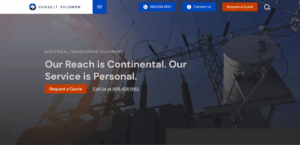In this edition of our Behind the Build blog series, we speak with Kevin Petrillo, Senior Project Manager at DPR Construction. Currently based in Atlanta, GA, Kevin brings more than three decades of experience to his role at the general contractor. Below, Kevin shares how he started working at DPR in addition to the challenges he has experienced working in the healthcare sector.
Attention Atlanta construction professionals!: We’ll be hosting a full day of sessions and training classes for builders at the Georgia Aquarium on Tuesday, October 1, 2019, for the Atlanta Roadshow. Learn more here.
How did you end up working for DPR Construction?
When I was working on the owner side, I was doing several projects in a healthcare streak with DPR. What started out as a six-month project, rolled into almost a year’s worth of upgrade and infrastructure work.
Eventually, someone on the project team from DPR approached me and asked me to consider joining their team because they thought I would be a valuable asset. I was a little apprehensive at first because there’s always a bit of tension between the contractor and the owner. However, I started to get to know others on the team a bit more, and before I knew it, I was interviewing at the company.
To me, the biggest draw of DPR is that in addition to healthcare, they do a large variety of projects including mission-critical work, life and science projects and even manufacturing. Right now, I’m working on a manufacturing job that will be a huge battery plant for electric cars. Additionally, DPR has a great and open work culture. It feels like everyone wants to help each other learn and grow.
What challenges have you come across in your experience working in the healthcare sector?
When you’re working with a hospital, you got to stay open. There isn’t any time or days off. It’s 24/7, 365 days a year and you’ve got to make sure that you have backups for everything. Every type of equipment that you can think of, there are always backups that you need to have in a hospital. It’s all this stuff that most people don’t ever see.
In general, healthcare construction raises the bar–everything always has to be correct and running. There are control measures that you put on for both sides. You’re not only protecting patients, but you’re also protecting your construction staff, too. The stakes are high and stressful, but it’s an exhilarating environment to work in.
What makes the Atlanta construction market unique?
Although I’m relatively new to the area (I’ve only been here for around two years), there are definitely some big differences I’ve noticed compared to where I came from, Charlotte, NC. In Charlotte, there were only two large healthcare providers. But in comparison, Atlanta has probably six or seven times the amount of healthcare work than Charlotte. That makes sense because the population of the city is much larger. Regardless, the Atlanta construction market is an exciting one to be a part of–it’s a fast-growing city with a wide range of work to be a part of.
How has PlanGrid helped your team to build better?
From my experience in healthcare, I have learned you have to be patient when making decisions. You always need to make sure all your I’s and T’s are crossed twice before you step over that red line.
That’s what PlanGrid does for me. If I know that I need to mark up drawings and send them over to a sub, it saves me time. I don’t need to go and find the subcontractor, and walk them to that area and show them the issue they need to address. I don’t have time for that now. Instead, I can send them the issue through PlanGrid, and they’re on it. In turn, they can send me a picture back showing it’s finished. It saves you countless hours in the field, especially when it comes to that menial stuff.
PlanGrid helps you to coordinate and collaborate in a more efficient and timely manner.
What used to take days now, just takes a few hours if you have a plan made.
What other construction technology does your team rely on?
At DPR, we are big BIM users and use tools like BIM 360. We primarily use it for quality assurance and quality control and the coordination and collaboration between the big hitters of any piece because of the 3D attributes. For instance, once you upload a model, the whole team can sit around and see exactly where a particular pipe’s going in and where that drain is under the slab.
For projects like hospitals, you can gather a bunch of experts in the room and use multi-angles and multi-views to mitigate the risk of major shutdowns. This helps to create happier clients and repeat business over time.
Any advice for the next generation of men and women thinking about joining the construction industry?
Broaden your spectrum of what your scope of job responsibilities are and what you think you want to do in the construction industry. There are so many different avenues to take in this industry, especially if you’re in a larger company. This applies to also learning new technology and software. The better you can learn the software that’s provided to you, whether it’s BIM or whatever your company uses.
Learn that software in and out. While, it’s likely to change over time, it’s going to make you better to learn how to adapt.



Responses